International Women in Science Day II
REPORT
The purpose of this project is to promote women's equal participation and access to science, to dispel prejudices about science as a male-dominated field, and to provide as many girls as possible with an opportunity to advance to positions of leadership. Every day, we show respect for women by actively participating in this project. Students celebrated International Women in Science Day by conducting research, participating in various activities, using Web 2.0 tools, collaborating, and having fun.
Eight students participated in the project: six students in grade 6 and two students in grade 9.
In the beginning, students watch the video for the first woman pharmacist in our country, Rajna Aleksova. Also, the teacher used the Adobe Spark tool to create a presentation for notable female scientists and students learned more about them. Students learned about the following scientists: Beatrix Potter, Gerty Theresa Cori, Florence R. Sabin, Dian Fossey, Ruth Dixon Turner, Rosalyn Sussman Yalow, Gertrude B. Elion, and Linda B Buck.
During the project, we used the following web 2.0 tools: Bitmoji, WordArt, PhotoFunia, Breaking News, Canva, StoryJumper, Greetings Island, Jigsaw Planet, Linoit, and Kahoot.
Despite our desire to promote science as an equal opportunity discipline for boys and girls, we have a strong affinity for nature and environmental protection. As members of the "Magnolia" ecologists' club, we chose to participate in the project using eco avatars created in Bitmoji.
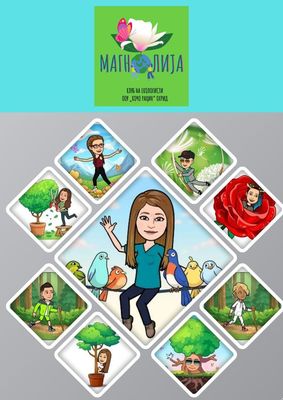
We used the internet to find out as much as we could about female scientists. We used WordArt to write their names and generate various pictures. After that, we created a poster and a collaborative video documenting the activities.

Each student chose a female scientist for whom he or she looked up images on the internet. The students then created photographs with interesting effects using the PhotoFunia tool. We had a lot of fun searching through the tool's many options for the appropriate result! These are the women scientists for whom the students made pictures in PhotoFunia: Marie Skłodowska Curie, Florence R. Sabin, Rosalyn Sussman Yalow, Linda B Buck, Rachel Carson, Ruth Dixon Turner, and Gerty Theresa Cori.
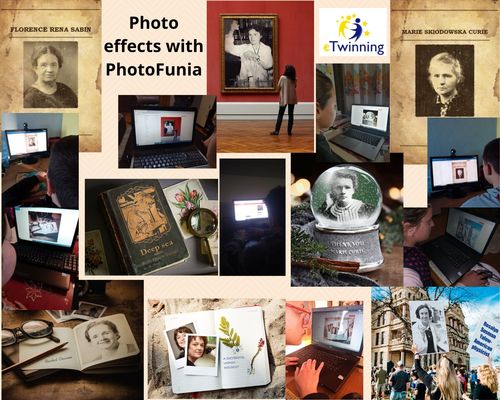
We were curious about a particular female scientist. Each student conducted research and utilized the Breaking News tool to create detailed information about the female scientist. We used the creations, recorded the news aloud, and made a collaborative video. The students conducted a study on the following scientists: Rosalyn Sussman Yalow, Dian Fossey, Florence R. Sabin, Gerty Theresa Cori, Ruth Dixon Turner, and Linda B Buck.
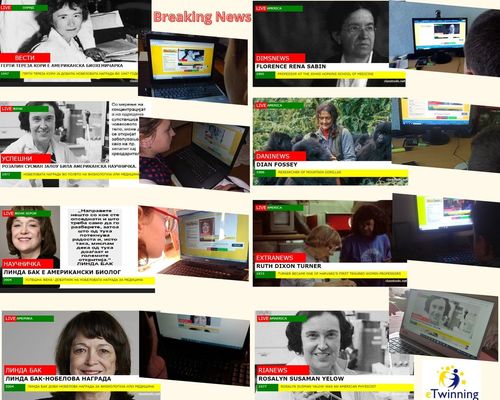
Canva is a fantastic tool with a lot of possibilities. It has been used to create newspapers and posters for female scientists: Marie Skłodowska Curie, Jane Goodall and Rachel Carson (newspapers), Rachel Carson and Dorothy Hodgkin (posters).
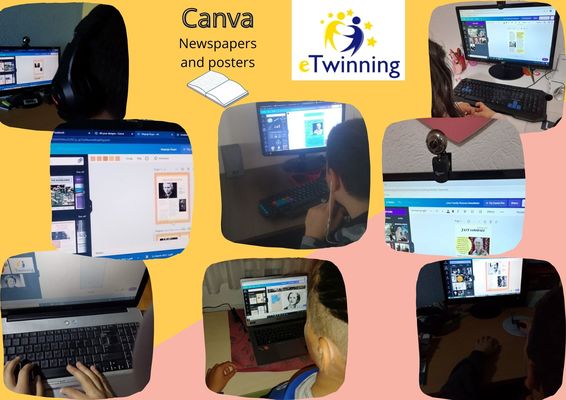
Also, it has been created e-books in Story Jumper: Amazing girls who have changed the world, Valentina Tereshkova and Marie Curie.
Although not every woman on the planet is a scientist, that does not mean women should not be respected every day. We expressed our love and respect to our mothers and other women by making greeting cards in Greetings Island on the occasion of International Women's Day.
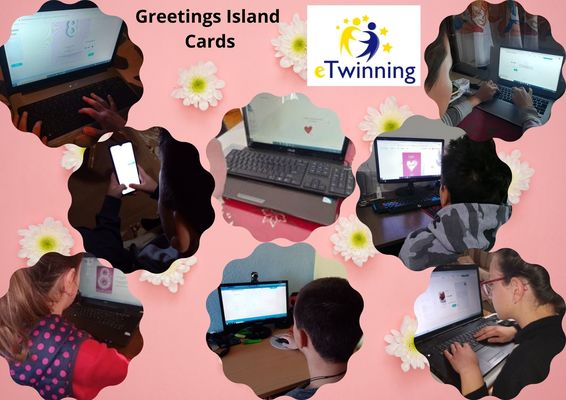
We celebrated International Nurses Day. We used the Jigsaw Planet tool and completed the picture of Florence Nightingale.
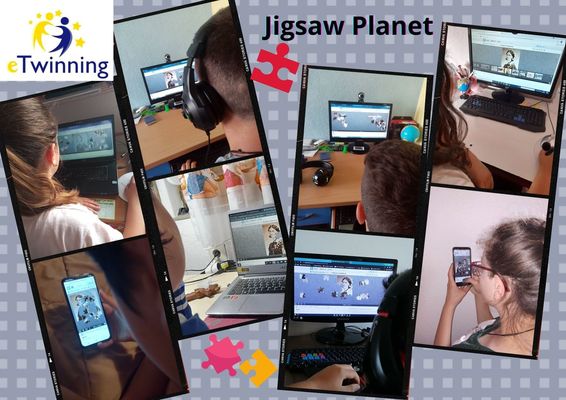
We use the tool Linoit for collaborative activity with teacher Jovanka Angjelkoska and the club Young Activists. According to a plan, each student placed a text on the collaboration board about a notable female scientist. Our collaboration resulted in the publication of an e-newspaper about famous female scientists.
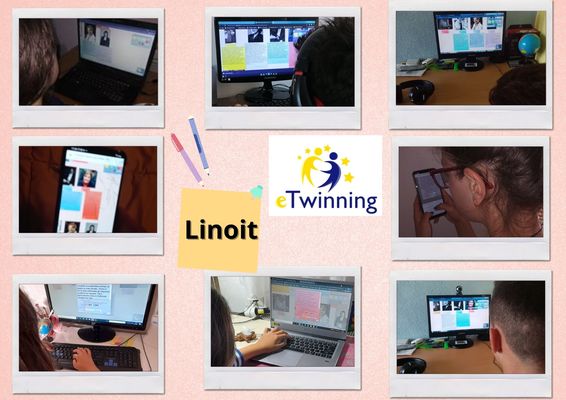
Students played a quiz in Kahoot and successfully finished the game about famous female scientists.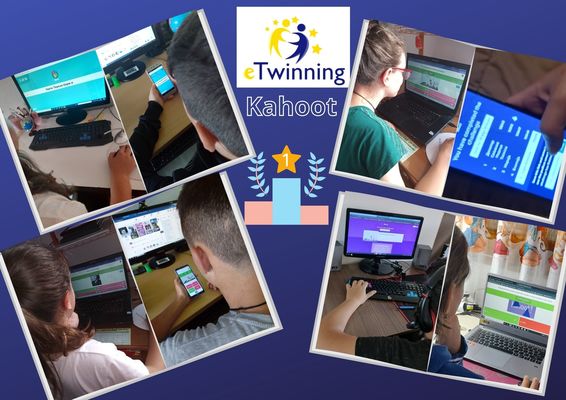
We created a collaborative videos with the activities during the project. Also, students filled out the survey about the project.
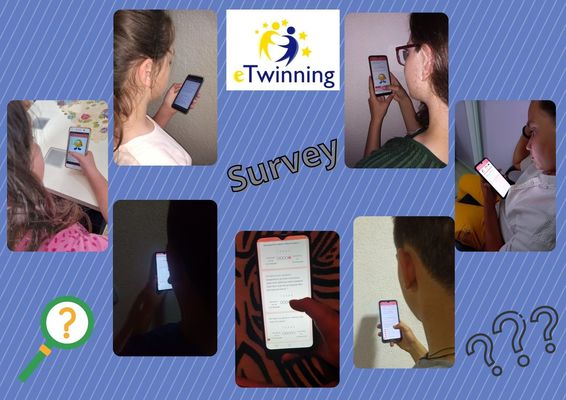
The project has been integrated with the curriculum. The study of the lives and works of some women scientists in the field of biology and medicine is integrated into the subjects: Natural Sciences and Biology. Students learned how to put their ideas into action, use multiple sources of information, and analyze and synthesize information. They improved their knowledge and research skills in a variety of contexts. They also developed self-confidence and respect for others as a result of STEM education.